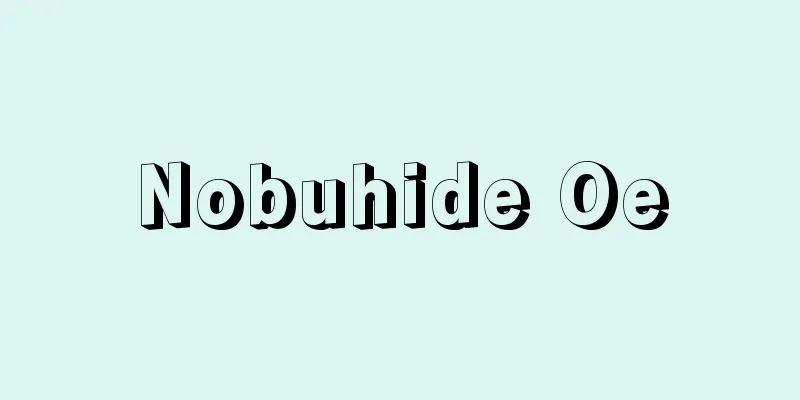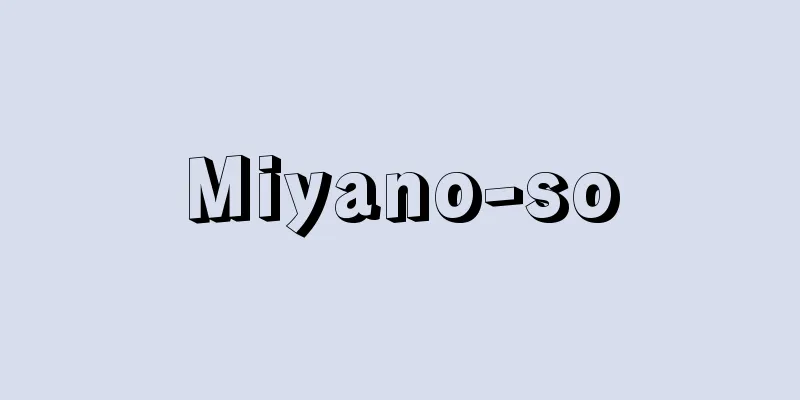Dialectics - dialectic English

|
A method of understanding one thing as the unity of two opposing principles. However, the Greek word "dialektikē", which is the origin of dialectics, is an adjective meaning "of dialogue", so adding the noun, it becomes "dialektikē methodos" (Republic, 533c7) or "dialektikē episteme" (Sophistes, 253c2-3). According to Plato, dialectics is a process of inquiry (methodos), a journey of discourse (poleiā) that approaches "what each thing is exactly" through dialogue, and ultimately attempts to directly grasp the first principle of things, the good itself, through the workings of the intellect, which is the highest science (episteme) (Republic, 592a and following). Plotinus defines "dialecticē" as "the art of being able to express in words what each thing is, how it differs from others, and what it has in common," and states, "Those who are worthy of being led into the upper world must be (1) those who love and seek knowledge, (2) those who appreciate beautiful sounds (those who are cultured in music and literature), and (3) those who live for love. These three types of people have a two-stage journey: from the world of the senses to the world of the intellect, and from the world of the intellect to its end. Dialecticē is the path that leads us to the Good, the First Principle." Socrates' method of dialogue was to consider "what something is" through dialogue with a specific person, but in most cases it ended in a complete negation. Hegel, through his study of skeptical thought, believed that an opportunity for affirmation hidden in the negation would emerge, and used dialectics in a looser sense as a method of understanding one thing as the unity of two opposing definitions. Should we regard the unity and contradiction of the opposition as true and necessary, or as accidental and illusory? Zeno, who denied the existence of motion, change, and variety by pointing out the contradiction of "Achilles and the Tortoise" that is included in asserting the existence of motion, was regarded by Aristotle as the father of dialectics. However, those who accept Zeno's logic and the existence of motion claim that "motion proves the reality of contradiction." Heraclitus, who many people believe to have said "Everything flows," said, "One cannot step into the same river twice." According to him, the universe is like a fire that is constantly burning and going out. Even things that exist in a still state are in an unstable state where two opposing forces are in balance. Even in modern times, Hegel understands existence as a constant process of metabolism that breaks down the self into the outside world while at the same time reproducing the self and maintaining its identity. The essence of the balance of opposing forces supports the phenomenon of still existence. As mentioned above, "dialektike" means "question and answer method," and in Plato's work, dialectics is the method of arriving at the truth while responding to Socrates' criticism, the process by which the spirit is elevated to the truth through negation. The spirit elevated through negation is the same spirit. According to Hegel, not only the spirit, but all things that develop, grow, and change contain the "unity of opposites," which is to "become different while remaining the same." At the limit of development and change, what is different becomes the same. This contradiction of limits is expressed in mathematics as a limit point in differentiation. At the limit point indicated by the tangent point on a graph, the curve is equal to a straight line. In the dialectical interpretation of differentiation, there is a principle that "the essential definition of a point includes the relationship with adjacent points." If this principle is extended to things in general, it becomes "the nature of something contains relations such as differences with other things." This is the same as saying that "relationships exist just like substances." If we further derive the definition that "inner essence is the aggregation of various relations," the problem is projected onto the structure of the relationship between the inner and the outer. Hegel also finds the same structure in introspection of the mind. When the mind is conscious of itself, the conscious mind and the mind that is conscious are the same, and yet not the same. It is precisely because the mind as subject and the mind as objective are the same that direct knowledge without the mediation of an external being is possible. For example, when I look at a mountain, I know that I am "looking at a mountain," and the reflective consciousness that is conscious of the conscious activity of "seeing" is the same consciousness that functions simultaneously with the consciousness of seeing. However, there is a distinction in terms of action between the knowing subject and the object that is known. Therefore, introspection and self-reflection contain the identity of the opposites, the "distinction without distinction." The inner and the outer, essence and phenomenon, the one idea and the many particulars, the signifier and the signified, the subjective and the objective are unified through the structure of introspection and "self-consciousness." Hegel uses this to rationalize the Neoplatonist notion of "the emanation of ideas" and the Christian concept of "incarnation." The resulting "grasp of things" (concept) contains the universal of essence, the particular of "this thing," and the mediating relationship itself (particular) in which the essence is individualized. In summary, "things are inferences (the synthesis of the universal, the particular, and the particular)." Hegel superimposes the Neoplatonist notion of "the unity of the three elements" onto the Christian concept of "the Trinity," restating it on the foundations of modern pantheism. Conventionally, Hegel's dialectic has been explained as a logic consisting of three stages: thesis, antithesis, and synthesis (abbreviated as thesis, antithesis, and synthesis), but this terminology does not appear in Hegel's texts. This is an explanation of Hegel's dialectic using Fichte's terminology. In Hegel's dialectic, the dialectic of limits in the continuum of numbers, the dialectic of homogeneity, the dialectic of inside and outside, and the dialectic of non-homogeneity are superimposed, but in Kierkegaard's "qualitative dialectic," paradoxes are introduced into non-homogeneity. For example, there is the concept of "simultaneity between Jesus and the self separated by 2000 years." K. Barth's "dialectical theology" includes the idea of identity of existence in the midst of absolute discontinuity between God and man. In Kierkegaard and Barth, the paradoxical mediation in discontinuity that rejects continuity and homogeneity forms the concept of dialectics. Marxism asserts that the structure of matter prior to cognition is reflected in the mind, becoming a dialectical structure. It denies the dialectical nature of the introspective structure of self-consciousness and regards dialectics as an ontological determination of the "reality of relations." [Kato Naotake] "Dialectics" by Kobayashi Noboru (1977, Aoki Shoten)" ▽ "Dialectics and Science" by R. Bueppner, translated by Kato Naotake, Isaka Seiji, and Takeda Junro (1983, Miraisha)" ▽ "The Great Logic" by Hegel, translated by Terasawa Tsunenobu (1983, Ibunsha)" ▽ "Studies in Hegelian Philosophy, edited by Nakano Hajime (1986, Risosha)" ▽ "Introduction to Dialectics" by Kayano Yoshio (Kodansha Gendai Shinsho)" [References] | | | | | | |Source: Shogakukan Encyclopedia Nipponica About Encyclopedia Nipponica Information | Legend |
|
一つの物事を対立した二つの規定の統一としてとらえる方法。だが、弁証法の語源にあたるギリシア語の「ディアレクティケーdialektikē」は「問答法の」という意味の形容詞であるから、名詞を補うと、「ディアレクティケー・メトドス」(『国家』533c7)、もしくは「ディアレクティケー・エピステーメー」(『ソピステス』253c2-3)となる。ディアレクティケーは、プラトンによると、問答によって、「それぞれのものがまさにそれであるところのもの」へと迫り、ついにはものの第一原理、善そのものを知性の働きによって直接に把握しようとする探究の行程(メトドス)、言論の旅路(ポレイアー)であって、これこそ最高の学問(エピステーメー)である(『国家』592a以下)。 プロティノスは「ディアレクティケー」を「それぞれのものが何であり、いかなる点で他と異なっているのか、そして共通点は何であるのかをことばでもって表すことのできるわざである」と定義して、「上方の世界に導かれるにふさわしい人は、(1)知を愛し求める人、(2)美しい音色を好む人(音楽・文芸の教養のある人)、(3)愛に生きる人でなければならぬ。この3種の人に、感性界から知性界への旅路と、知性界から、そのはてへの旅路という2段階の旅路がある。ディアレクティケーは、われわれを〈善〉、〈第一原理〉へと導く道程である」と述べている。 ソクラテスの問答法は、特定の相手との問答を通して「ものの何であるか」を考察するものであるが、それはほとんどの場合、まったくの否定に終わってしまった。ヘーゲルは、懐疑主義思想の研究を通じて、その否定のなかにひそむ肯定の契機が出てくるとみなして、弁証法を一つの物事を対立した二つの規定の統一としてとらえる方法という緩やかな意味で用いた。 その対立の統一・矛盾を真かつ必然とみなすか、偶然かつ仮象とみなすか。運動の存在を主張することに含まれる「アキレスと亀(かめ)」のような矛盾を指摘して、運動、変化、多様の存在を否認したゼノンはアリストテレスによって弁証法の父とみなされた。しかしゼノンの論理を認めて、なおかつ運動の存在を認める者は、「運動が矛盾の実在を証明している」と主張する。「万物は流転する」と語ったと多くの人がみなしてきたヘラクレイトスは、「人は同じ川に二度入ることができない」という。彼によれば、宇宙は絶えず消えつつ燃えている火のようなものである。静止して存続している物も、実際には二つの対立する力が均衡している不安定な状態である。近代においても、ヘーゲルは、存在を、絶えず新陳代謝によって、自己を外界に分解させながら、同時に自己を再生産し、同一を維持することだと把握している。対立する力の均衡という本質が、静止した存続という現象を支えている。 前述のように「ディアレクティケー」は、「問答法の」という意味であり、プラトンの著作では、ソクラテスの批判に応答しながら、真理に到達する方法、否定を通じて精神が真理にまで高まる過程が弁証法である。否定を通じて高揚する精神は同一の精神である。 ヘーゲルによれば、精神に限らず、発展・成長・変化するものには、「他となりつつ同一を保つ」という「対立の統一」が含まれている。発展・変化の限界点では違うものが同じものである。この限界の矛盾性が、数学においては微分に表現される極限点に成立する。グラフ上接点で示される極限点では、曲線が直線に等しい。微分の弁証法的な解釈には、「点の本質的な規定として隣接点との関係が含まれる」という原理がある。もの一般にこの原理を拡張すると、「あるものの本性には他のものとの異なり等の関係が内在する」となる。これは、「関係は実体と同様に実在する」といっても同じことである。ここからさらに、「内的な本質とは多様な関係の集約である」という規定を導き出すと、問題は内なるものと外なるものとの関係という構造に射映される。 ヘーゲルは、同一の構造を心の内省のうちにもみいだす。心がその心を意識するとき、意識する心と意識される心とは、同一であって、しかも同一ではない。主観としての心と客観としての心が同一であるからこそ、外部の媒介を経ない直接の知が成り立つ。たとえば、山を見る私は自分が「山を見ている」ということを知っており、「見る」という意識活動を意識する反省意識は見る意識と同時に働く、同一の意識である。しかし、知る主体と知られる客体という作用面での区別がある。したがって、内省・反省のうちには「区別のない区別」という対立者の同一が含まれる。 内なるものと外なるもの、本質と現象、一なるイデアと多なる個物、意味するものと意味されるもの、主観と客観は、内省・「自己意識」の構造を媒介として統一される。ヘーゲルは、新プラトン派の説く「イデアの流出」や、キリスト教的な「受肉」の概念をこれによって合理化する。その結果として生まれる「ものの把握」(概念)には、本質という普遍、「このもの」という個別、本質が個別化されているという媒介関係そのもの(特殊)が含まれている。これを要約すると、「ものとは推論(普遍、特殊、個別の総合)である」となる。ヘーゲルは、「三要素の一体」という新プラトン派の観念を、キリスト教の「三位(さんみ)一体」に重ね合わせ、近代汎神論(はんしんろん)の土台の上に据え直す。 従来、ヘーゲルの弁証法を定立(テーゼ)、反定立(アンチテーゼ)、総合(ジンテーゼ)の三段階(略して正・反・合)で構成される論理であるという説明が行われてきたが、この語法はヘーゲルのテキスト中にはない。フィヒテの用語を援用してヘーゲル弁証法を説明したものである。 ヘーゲルの弁証法では、数の連続体における限界の弁証法、等質性の弁証法と内と外の弁証法、非等質性の弁証法が重ね合わせになっているが、キルケゴールの「質的弁証法」では、非等質性のなかに逆説的なものが導入されてくる。たとえば、「イエスと自己との2000年を隔てた同時性」という概念がある。K・バルトの「弁証法神学」には、神人の絶対的な断絶のさなかにおける存在の同一という思想がある。キルケゴール、バルトでは、連続性・等質性を拒否した断絶における逆説的な媒介が、弁証法の概念を形づくっている。 マルクス主義では、認識以前の物質の構造が精神に反映されて、弁証法の構造となると主張される。自己意識の内省構造の弁証法性を否認して、「関係の実在性」という存在論的な規定として弁証法がとらえられる。 [加藤尚武] 『小林登著『弁証法』(1977・青木書店)』▽『R・ブプナー著、加藤尚武・伊坂青司・竹田純郎訳『弁証法と科学』(1983・未来社)』▽『ヘーゲル著、寺沢恒信訳『大論理学』(1983・以文社)』▽『中埜肇編『ヘーゲル哲学研究』(1986・理想社)』▽『茅野良男著『弁証法入門』(講談社現代新書)』 [参照項目] | | | | | | |出典 小学館 日本大百科全書(ニッポニカ)日本大百科全書(ニッポニカ)について 情報 | 凡例 |
<<: Dialectical theology (English: Dialektische Theologie) German
Recommend
Family festival - Uji Festival
…It is noteworthy that in the original ujigami ri...
Xanthene dyes - Xanthene dyes
Also known as xanthene dyes. A general term for d...
Post-expiration endorsement - Kigengouragaki (English) Nachindossament
In the case of a bill, it is an endorsement made a...
Pantelleria Island (English spelling)
A volcanic island located in southern Italy betwee...
smack
…His real name was James Fletcher Henderson. He w...
United States Marine Corps
...A naval force organized especially for land wa...
Brugmansia japonica - Brugmansia japonica
...Compared to the two species mentioned above, t...
Culture - Education
Culture refers to the effort and results of culti...
Dietrich von Niem
Around 1340 - 1418 Born into a citizen's famil...
Usa Daiguji - Usa Daiguji
...The first shrine is Usa Jingu (Usa Hachiman Sh...
étude (English spelling) etude
…It is a general term for drawings made with simp...
Wood rat - Wood rat
A general term for mammals of the genus Neotoma in...
Onania - masturbation
... The repression of sexuality by Christianity h...
Protandry
...Black porgy and bivalve oysters once function ...
Masjed-e Jom'e (English spelling)
A mosque in Isfahan, Iran. A masterpiece of Seljuk...









